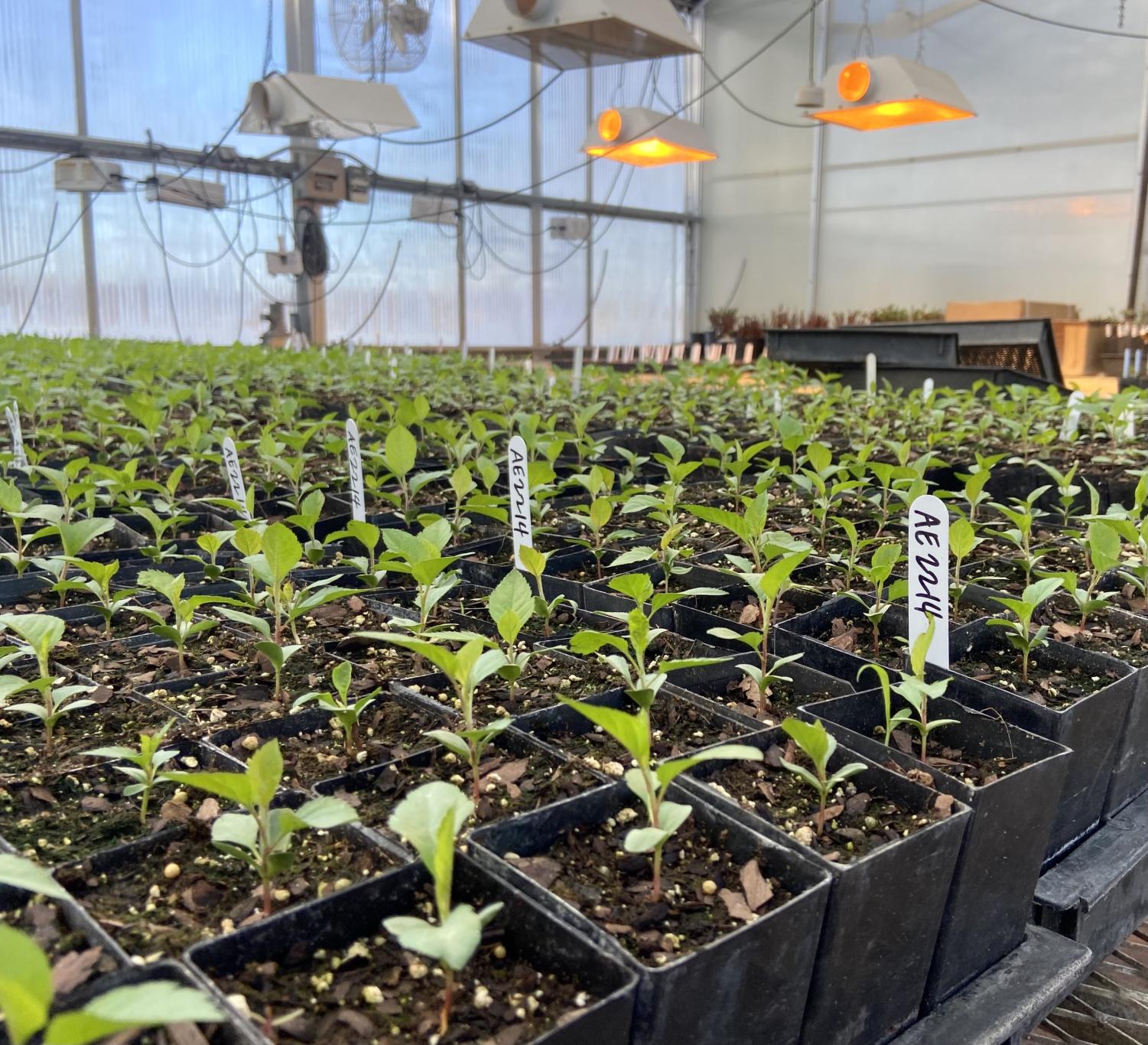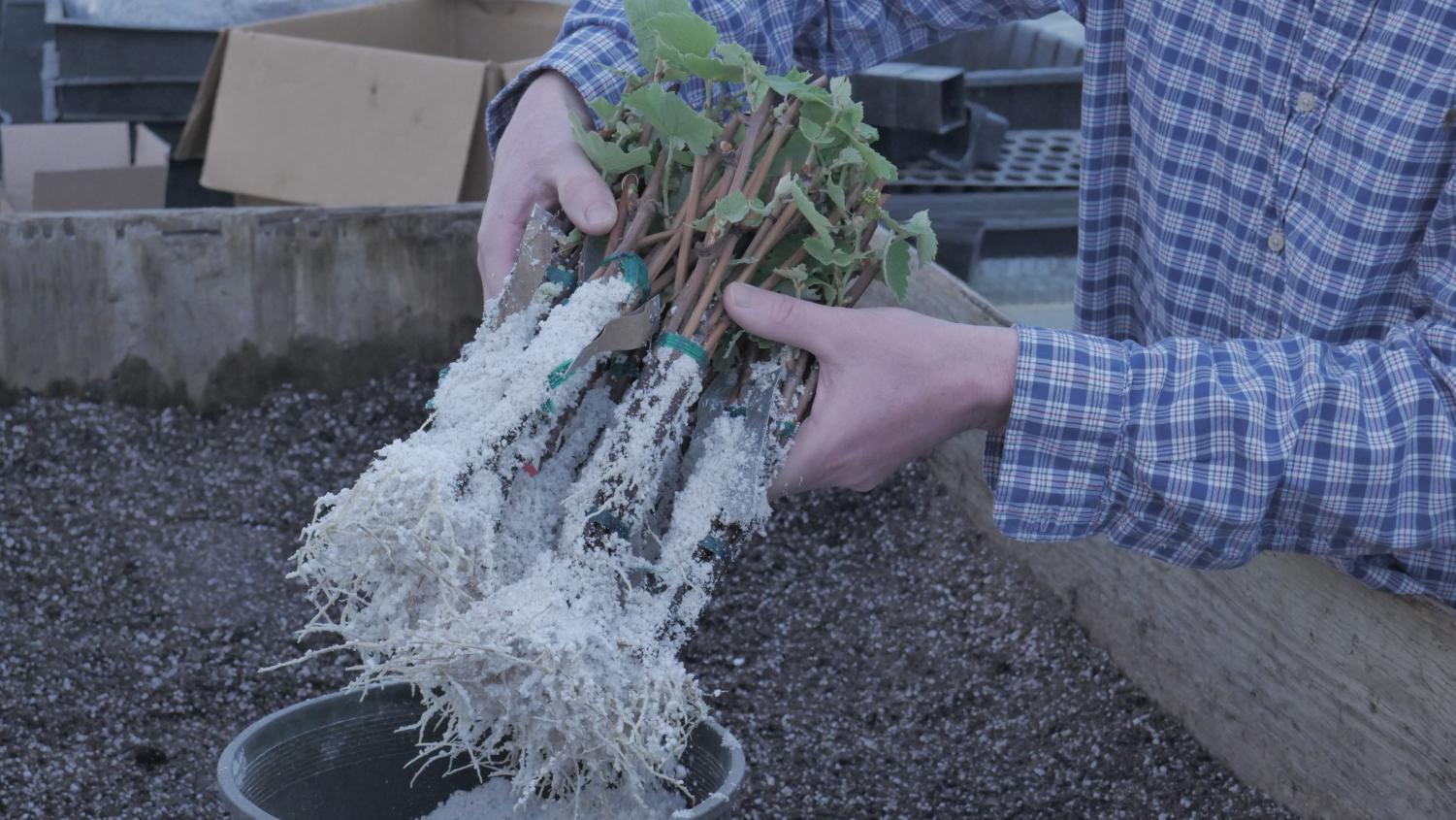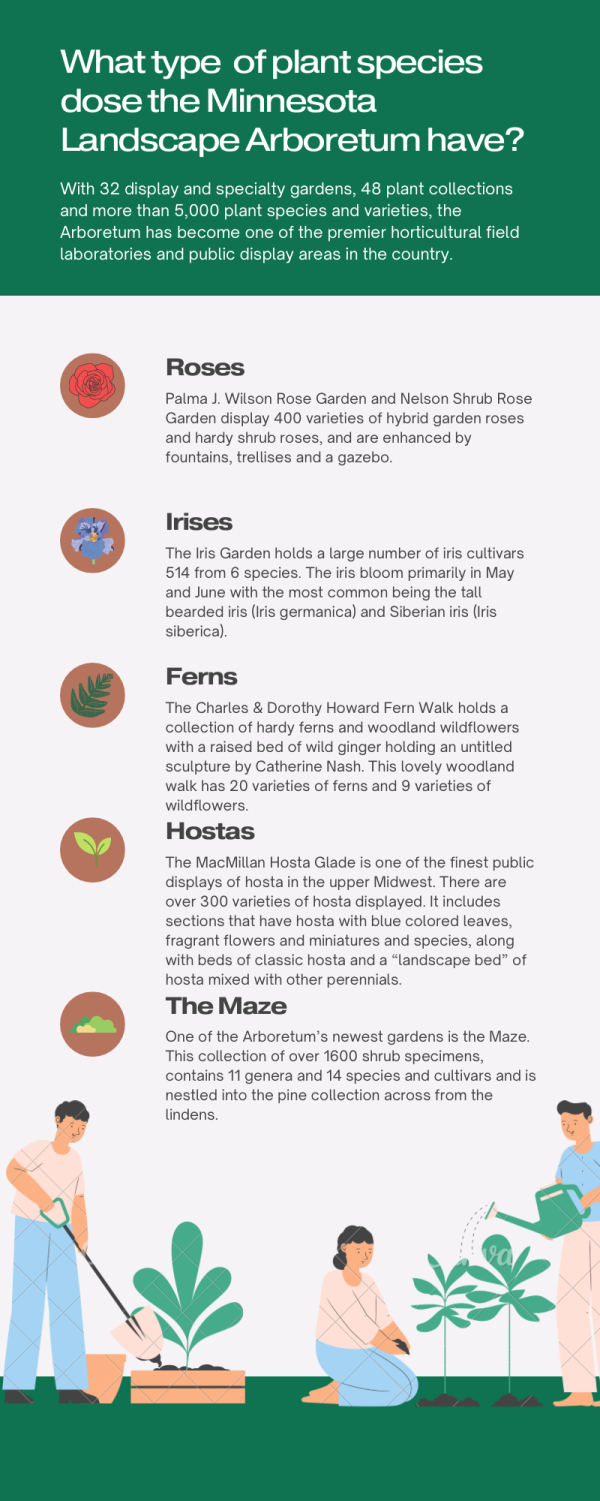How the Minnesota Landscape Arboretum is helping its community
April 28, 2023
The growing awareness of nature-based therapeutics
The Minnesota Arboretum has been involved in the Nature-Based Therapeutic program for years. But what are Nature Based Therapeutics? Nature Based Therapeutics is an umbrella term to describe different nature-based methods. For example, Horticultural therapy, Animal Assisted interventions, therapeutic landscape design, wilderness therapy, and the list goes on. But what do all these different types of Therapeutics have in common? They have found being out in nature helps to alleviate stress and reduce high blood pressure and anxiety. Out of all these diverse Therapeutics the Minnesota Arboretum is involved in services (including therapeutic horticulture, green exercise, therapeutic landscape design, and animal-assisted interventions).
Jean M. Larson who coordinates the Minnesota Arboretum Nature Based Therapeutics program was able to give a deeper insight into what nature therapeutics do for the mind and body. “Here’s an example. So we work with patients with Parkinson’s disease. And our program isn’t addressing Parkinson’s disease our program addresses the secondary symptom of Parkinson’s which is depression. And so we’re working with our clients on helping them to not feel so depressed. So the garden is a place where they can activate and be creative and feel good about the products that they’re growing.”
Jean M. Larson was also able to explain the growth in Nature Based Therapeutics programs and their growth, especially during Covid-19. How “Therapeutic, really medical model intervention expanded and have become more recognized by insurance companies as third party reimbursement. So for example, if you are a young person and you’re dealing with issues of anxiety and depression, you might go to an equine therapist or, work with horses and the horse therapy would be covered by your insurance. So that’s something that has been expanding and growing. From that one side of the continuum of that very medical intervention, the other end is general public health that we all can experience. I think COVID-19 really opens people’s eyes to nature and was helping them feel better because it was the only place that people could gather. You know, we weren’t permitted to be indoors.”
In conclusion, nature-based therapeutics are a promising approach to improving mental health and well-being. By incorporating elements of nature, such as outdoor activities or exposure to greenery, these therapies aim to reduce stress, anxiety, and depression. Overall, nature-based therapeutics are a valuable addition to our toolkit for improving well-being. The Minnesota Arboretum is one of the many organizations taking steps to broaden its effect on their community.

The decline in plant biodiversity
Plant Conservation has been on a steady incline through the years, as global warming and other natural disasters are affecting the earth. In recent years there has been a decline in plant biodiversity which has caused a movement to start protecting and bringing back rare and endangered plant species. The Minnesota Landscape Arboretum has made it one of its goals to focus on the preservation and restoration of plant species in the upper Midwest.
For example, the rare native Minnesota orchids which have been able to work with a ballpark of 75 orchid species. The Minnesota Conservation program works extensively with Orchids, starting many of them in a lab and working with most of them every year. But for several of those species working with them means they have to start with just the orchid seed and in most cases, nothing happens. But somewhere in the range of 20 to 30 orchids they are able to get something to happen and this is where the restoration and conservation begin. Not only does the Minnesota Arboretum protect plants but they also focus on propagation, seed banking, and reintroduction of these rare species.

Plant researcher John Thull answers an important question
Q; How has global warming affected plant conservation, how has having to conserve and protect plants increased a lot over the US?
A; I think one of the main things we talked about in climate change is the change in ranges, like if a species is adapted to a certain temperature range. Over time, as we talked about polar bears all the time, like their habitats, the ice is melting, and it’s getting too warm for them. A similar thing happens with plants. If it gets too warm it starts to get rainier, which released plants have adapted to. They might need to migrate like animals are, but the thing is that it’s harder or slower, usually for plants to migrate. So one of the things we talk about and think about is, how can we move plants? When should we move plants?


